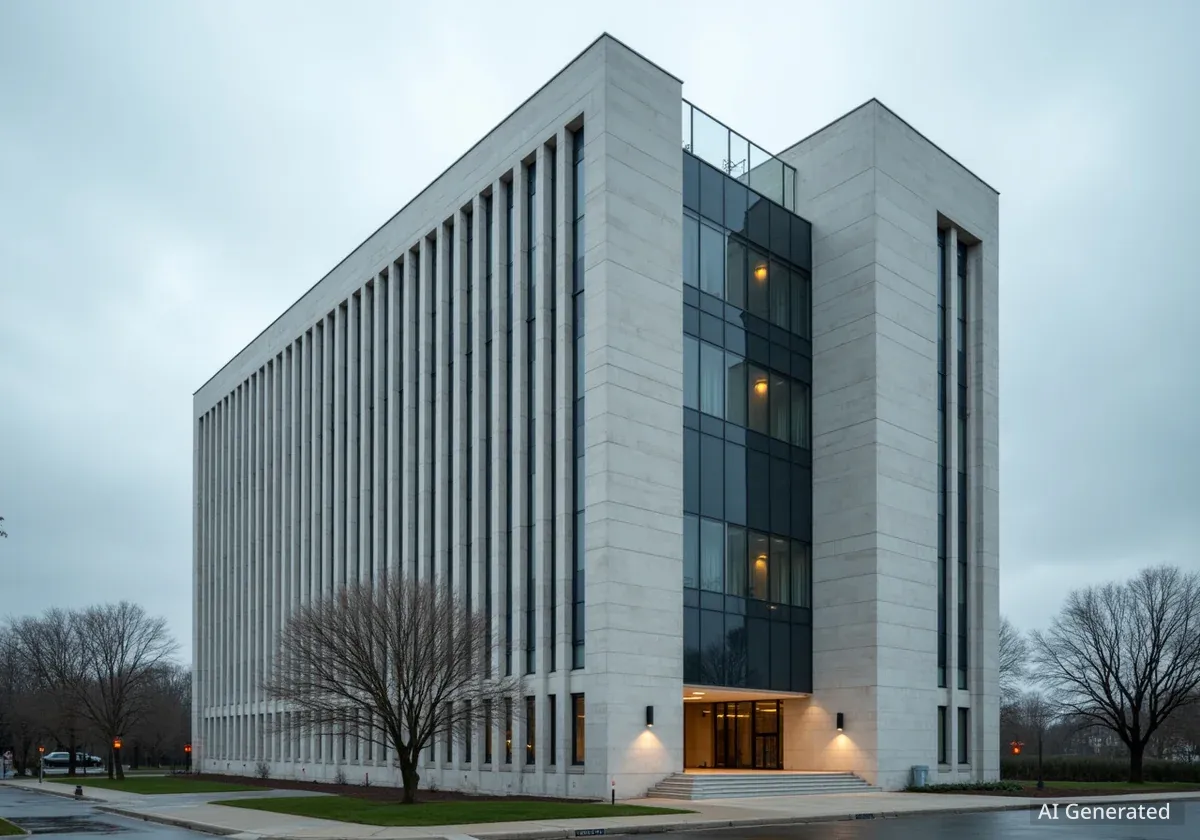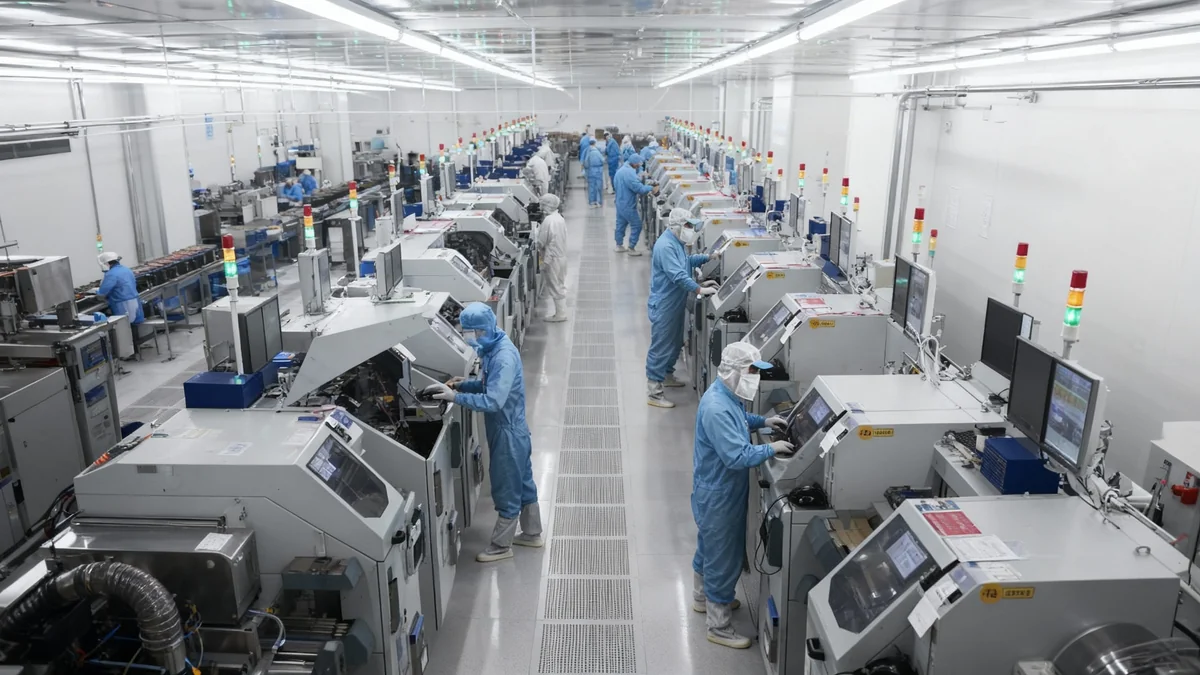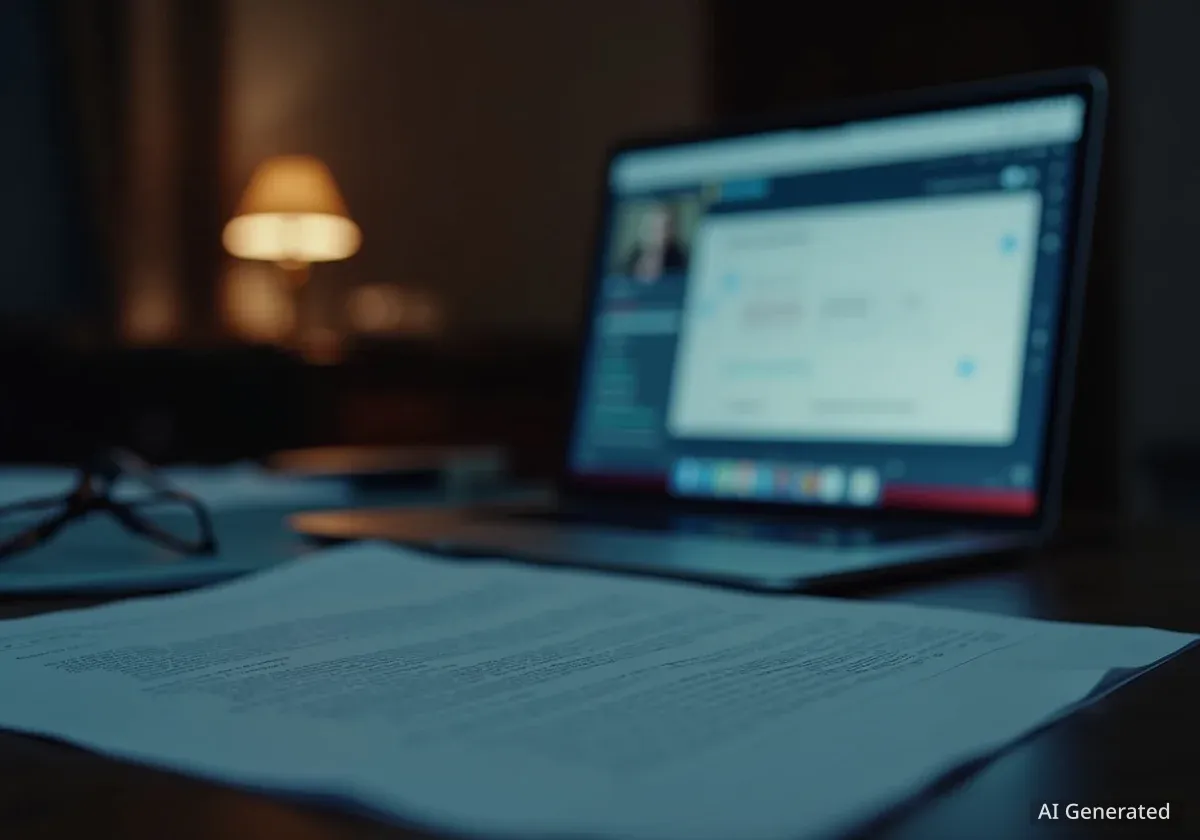The office of Oakland Mayor Barbara Lee distributed a media advisory for her first State of the City address that featured an artificial intelligence-generated image of City Hall. The image contained noticeable inaccuracies, prompting the mayor's office to acknowledge the error and state that future communications will use authentic photographs.
Key Takeaways
- An official press release from the Oakland Mayor's office used an AI-generated image of City Hall with clear architectural errors.
- A spokesperson for the mayor confirmed the use of AI was an isolated incident and not standard practice.
- The city has had interim guidelines for AI use since December, which require disclosure when AI is used in public information.
- This event highlights the challenges governments face in adopting AI while ensuring accuracy and transparency.
AI-Generated Image Raises Questions
An official communication from Oakland Mayor Barbara Lee's office regarding her upcoming State of the City address has drawn attention for its use of artificial intelligence. The press release, sent to reporters, was topped with a digitally created image of Oakland City Hall that contained several architectural fabrications and omissions.
Journalists familiar with the Beaux-Arts style building quickly identified discrepancies between the AI-generated picture and the actual structure. The incident occurred as the mayor prepared to deliver her first major address, which was scheduled to review her administration's first six months and outline future challenges.
The use of a flawed, machine-generated image for an official government announcement has opened a discussion about the city's policies and practices regarding emerging technologies.
The Challenge of AI in Public Sector Communications
As AI tools become more accessible, public and private organizations are exploring their use for efficiency. However, this adoption comes with risks, including the potential for generating inaccurate information or images, which can undermine public trust. This incident serves as a case study in the need for strict verification protocols.
Mayor's Office Acknowledges Mistake
In response to inquiries about the image, a spokesperson for the mayor's office addressed the situation directly. Justin Phillips, representing the mayor's office, described the use of the AI graphic as an unusual occurrence.
"We don’t normally rely on AI for content or graphics, particularly in media advisories. Moving forward, we’re going to stick with regular images."
Phillips characterized the decision as "definitely an outlier," suggesting that it does not reflect a broader strategy to incorporate AI-generated content into the city's public communications. The statement indicates a return to traditional methods to ensure authenticity and accuracy in materials released to the media and the public.
Oakland's Existing and Future AI Policies
The City of Oakland has been proactively working to establish a framework for the responsible use of artificial intelligence. According to Deputy City Administrator Joe DeVries, a comprehensive plan for AI utilization has been in development for over a year and is expected to be released soon.
While a formal policy is pending, the city has not been operating without rules. Interim guidelines for city staff have been in effect since December of the previous year. These guidelines are designed to mitigate risks associated with AI tools.
Key Provisions of Oakland's Interim AI Rules
The temporary guidelines prohibit staff from inputting sensitive city data or personal information identifying city personnel or residents into AI systems. They also mandate a review process before new AI tools can be adopted for official use.
A Lapse in Disclosure
A significant component of the interim guidelines is the requirement for transparency. City staff are instructed to cite any use of AI in the creation of public information. The press release containing the altered City Hall image did not include such a disclosure, indicating a failure to adhere to the established temporary protocol.
This oversight highlights the gap that can exist between policy creation and practical implementation, especially as employees across departments begin to experiment with new, widely available technologies.
Governments Grapple with New Technology
The incident in Oakland is reflective of a larger, global challenge facing government agencies. Public sector bodies are under pressure to modernize and improve efficiency, and AI presents a powerful tool for achieving those goals. However, the technology also introduces significant questions about several key areas:
- Accuracy: As demonstrated by the City Hall image, AI can produce convincing but incorrect outputs.
- Transparency: Citizens have a right to know when government communications are machine-generated.
- Privacy: The data used to train and operate AI models raises concerns about how residents' information is handled.
- Environmental Impact: The computational power required for complex AI models has a notable energy footprint.
Cities, states, and federal agencies worldwide are in the process of developing regulations and best practices to navigate these complex issues. The goal is to harness the benefits of AI, such as automating repetitive tasks and analyzing large datasets, while establishing strong guardrails to prevent misuse and maintain public confidence.
Oakland's ongoing efforts to finalize its formal AI policy will likely be informed by this recent experience, emphasizing the need for clear communication, staff training, and consistent enforcement of established guidelines.





